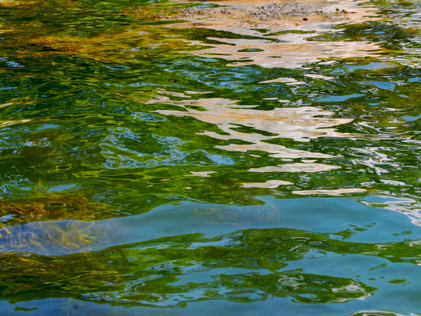Water Crisis Facts
0 Comments

My thirteen year old daughter is doing her science fair project on the water crisis. Below she shares some of her facts. Tomorrow I’ll cover the fair itself and you’ll see her diagrams that include more things to ponder (see here). In the meantime, this short list will give you something to think about!
- The earth’s surface is 70% water, a tree is 75% water and an apple is 80% water an adult man is 70% water and an adult woman is 50% water.
- If all the water in the world is represented as a bucketful, only the equivalent of a small drop of water on your finger of that is useable. The rest is salt water or irretrievably frozen. (.4% of the world’s water is usable.) And irrigation uses 2/3 of all that fresh water.
- The Great Lakes hold a 5th of all the world’s fresh water and 90% of the USA’s fresh water.
- The same fresh water is recycled over and over again; we are drinking the same water that the dinosaurs did. There is a finite amount of it. The population grows every year and we are polluting te water more and more.
- Each year, the world population increases by 90 million people, which is as much as the entire population of Mexico. As the amount of water is fixed, there is less and less of it to go around.
- Medicine has doubled our life span, so this contributes to population expansion. Right now six babies are being born for every three people that die.
- By 2050 the population will have increased by 50%.
- In the last century the population has tripled and water use has increased six fold.
- In the past, the majority of the population has lived on farms and not in cities, but soon the majority of the population will live in cities. How will they get potable water?
- A lot of people are using two to three times the amount of water they did a generation ago.
- While the world grows twice as much food as it did before, it takes three times as much water to do that.
- It takes 3,000 gallons of water to make one quarter pound hamburger. To make one car, it takes 32,000 gallons to produce the material for it, while for a bicycle it takes 480 gallons to produce the material.
- Aquifers are being drained at a rate that is twice as fast as they are being filled. Aquifers can’t be filled overnight; it takes decades to fill an aquifer.
- Beijing’s water table has fallen over 200 feet in the last two decades.
- The water is being pulled out of the rivers and aquifers and diverted somewhere else, leaving the original resources dried up. Are we going to do that to the Great Lakes?
- In Kansas, the water table has declined about 200 feet in the last 45 years.
- 1,374 square miles of land turns into desert every year.
- In Africa, the total of all the hours spent hand collecting water each year is about 40,000,000,000 hours.
- One-fourth of all electricity in the world is made by hydroelectric dams
- The amount of water that evaporates from behind the Aswan High Dam each year is the amount of water all of Brittan will use in one year. (This is very inefficient.)
- It takes five liters of water to bottle one liter of water. (Also poor management.) And only 25% of water bottles are then recycled.
- Atrazine is a pesticide that is heavily used in the US; we buy it from Europe where it is illegal (banned as early as 1991 with no decrease in crop yield.). It disrupts hormones and is carcinogenic. Atrazine enters the water cycle and now everyone unwittingly drinks it. It has been found in breast milk from Inuit mothers to the Congo. (We can’t just poison one thing, we unintentionally poison others things.)
- 70% of China’s rivers no longer support life they are so toxic. That same water comes up into the water cycle to return to be drunk by humans.
- Every day about a billion gallons of sewage is poured in to the seas or underground aquifers.
- Half the hospital beds in the world are occupied by people with diseases that come directly from drinking dirty water.
- 200 people die each hour of preventable water borne diseases, equivalent to eleven jumbo jets crashing each day. Just providing access to clean water without anything else different would save over 2 million lives each year.
- 1.8 million children die every year from preventable water born diseases, about one every 15 seconds.
- Water requirement per day is .6 gallons. The average family in Africa uses 5 gallons a day. The average person in the US uses 175 gallons a day. These numbers do not include agriculture, which globally uses 70% of all the fresh water. Millions of people live with less than a gallon a day of water. (One out of every six people do not have enough clean water.)
- In 15 years 2/3 of the world population will not have enough water.
The solution has to start individually:
- We need to start treating water like it is something rare because it really is.
- We need to catch the rain as it falls. If we do that, we are using our resources a lot better.
- Stop drinking commercially bottled water.
- If you cut one minute out of your shower time, you save 700 gallons of water each month.
- We need tons of little projects, education and local remedies to solve this problem. Blue Planet Run has devised a good system to do this.
- The biggest water wasters in the world are the farmers. They need to use drip irrigation instead of spraying the whole field. They need to cut down on the amount of water that is used on their crops or find different kinds of crops that don’t use as much water.
- Toilets use a lot of water, so if you put a brick in the toilet tank it will lessen the amount of water that is used, saving 8 to 10 gallons a day per person.
- If you don’t leave the water running while you brush your teeth you will save 3 gallons of water with each brush.
- Run only full loads in the washing machine and dishwasher.
- Use a bucket instead of a hose when you are watering your garden or washing a car or truck.
- Keep an old milk jug filled with water in the refrigerator instead of turning on the faucet every time you want a drink. This will save 200 to 300 gallons a week.
- Watering your gardens at dusk or in the early morning so you don’t waste as much water because most of it soaks in.
- Covering your swimming pool when it is not in use will save 1300 gallons a year.
- Give money to organizations that are bringing potable water to those without it.
- Do not use pesticides or fertilizers that contribute to contaminating the water supply.
- Write to your government to limit pollutants from entering the water cycle. (Banning American use of atrazine, for example.)
Who owns the fresh water? Who has a right to it? How is it best managed? How can we clean it up and efficiently deliver it to an exponentially growing population that cannot live without it?
Favorite sources in this study were the movie FLOW (click here) and the book Blue Planet Run (click here).



